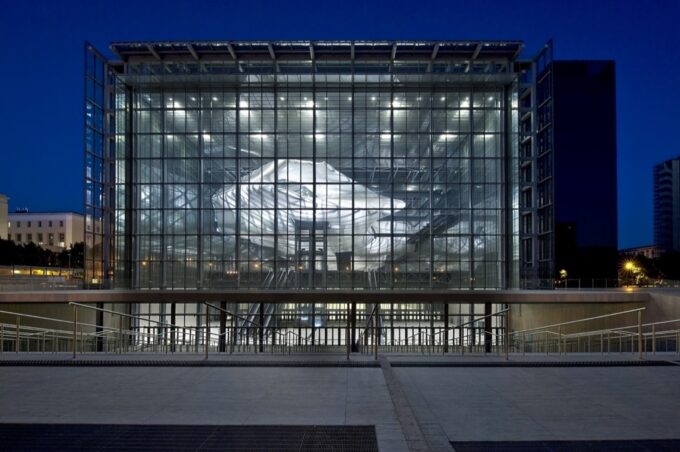- Home
- Articles
- Architectural Portfolio
- Architectral Presentation
- Inspirational Stories
- Architecture News
- Visualization
- BIM Industry
- Facade Design
- Parametric Design
- Career
- Landscape Architecture
- Construction
- Artificial Intelligence
- Sketching
- Design Softwares
- Diagrams
- Writing
- Architectural Tips
- Sustainability
- Courses
- Concept
- Technology
- History & Heritage
- Future of Architecture
- Guides & How-To
- Art & Culture
- Projects
- Interior Design
- Competitions
- Jobs
- Store
- Tools
- More
- Home
- Articles
- Architectural Portfolio
- Architectral Presentation
- Inspirational Stories
- Architecture News
- Visualization
- BIM Industry
- Facade Design
- Parametric Design
- Career
- Landscape Architecture
- Construction
- Artificial Intelligence
- Sketching
- Design Softwares
- Diagrams
- Writing
- Architectural Tips
- Sustainability
- Courses
- Concept
- Technology
- History & Heritage
- Future of Architecture
- Guides & How-To
- Art & Culture
- Projects
- Interior Design
- Competitions
- Jobs
- Store
- Tools
- More

In a world defined by rapid urbanization, shrinking living spaces, and an ever-evolving lifestyle, the demand for flexible interior design has grown significantly. Gone are the days when a home had rooms with fixed functions. Modern living requires adaptability, as well as spaces that can multitask. Enter flexible interiors – a design approach that not only responds to our contemporary needs but also enhances the quality of life in urban dwellings.
Modern living demands adaptability, a principle that flexible interiors perfectly embody. The increasing inclination towards such designs can be attributed to a myriad of reasons:
Dynamic Lifestyles: Today’s world is characterized by fluid roles and changing routines. From remote work and online education to the pursuit of diverse hobbies, our spaces need to cater to a multitude of activities. This calls for interiors that can seamlessly transition based on activity, ensuring both productivity and relaxation.
Space Constraints: The march of urbanization, combined with escalating real estate prices, has confined many to smaller living quarters. In such scenarios, maximizing space becomes crucial. Flexible interiors answer this challenge by transforming limited spaces into multifunctional havens.
Evolving Family Needs: Households today aren’t static. Children grow, sometimes elderly parents move in, or perhaps a young adult returns to the nest. As the composition of families changes, the home environment must adapt. Rather than undertaking expansive renovations, flexible designs offer simpler solutions to meet these evolving needs.

Economic and Environmental Concerns: In the long run, investing in adaptability is cost-effective. Instead of periodic renovations or buying new furniture for changing requirements, one can reconfigure existing setups. This approach not only reduces financial strain but also aligns with sustainable living principles, emphasizing quality over quantity and reducing waste.
Personalization and Technology: Modern individuals seek spaces that mirror their identity. Flexible interiors grant them this autonomy, allowing for constant personalization. Additionally, with smart homes becoming the norm, interiors need the agility to incorporate ever-evolving technological advancements.
Preparedness and Aesthetics: An unpredictable future demands preparedness. Whether it’s unforeseen global events or personal life changes, adaptable homes offer a semblance of control. On a lighter note, the ability to regularly modify one’s space ensures a fresh and rejuvenating ambiance, keeping monotony at bay.
Flexible interiors are not just a design trend; they resonate deeply with contemporary lifestyles, ensuring homes are not just places of residence, but spaces that truly evolve with their inhabitants. Let’s explore how to design modern and flexible interiors below!

Table of Contents
Toggle1. Efficient Utilization of Space
Urban apartments and homes are often limited in size. Flexible interiors, with their transformable furniture and multifunctional spaces, make the most out of every square inch. Consider the popularity of murphy beds, expandable dining tables, or modular sofas; these are all embodiments of flexibility, allowing a single space to transition seamlessly from a living area to a bedroom or a dining room.
2. Adapting to Dynamic Lifestyles
As our lifestyles evolve, so do our spatial needs. A remote worker, for instance, may need a home office during the day, but that same space could be repurposed as a relaxation corner by evening. Flexible interiors provide solutions for these dynamic requirements, eliminating the need for expensive renovations every time life throws a curveball.

3. Embracing Minimalism and Sustainability
The rise in popularity of minimalistic design isn’t merely aesthetic. It’s also a conscious effort to reduce our carbon footprint. Flexible interiors promote owning fewer things but ensuring those things serve multiple purposes. This not only reduces clutter but also cuts down on the wasteful cycle of buying and discarding.
4. Enhancing Quality of Life
Flexible spaces, by their design, are geared towards making daily life more convenient. Pull-out counters in kitchens, for example, provide extra workspace when needed and retract to offer more walking space. This fluidity ensures that spaces can adjust to different activities and moods, elevating the overall living experience.

Submit your architectural projects
Follow these steps for submission your project. Submission FormLatest Posts
General Arrangement Drawings in Architecture: The Backbone of Clear Design Communication
General Arrangement Drawings explained: what they are, when to use them, how...
The Ultimate Guide to Fencing in North Dakota: Choosing the Best Fence for Your Property
Watching a chain link fence twist in 70 mph winds near Minot...
Gaudí: Where Architecture Meets Science
Gaudí: Where Architecture Meets Science shows catenary arches, ruled surfaces, and biomimicry...
How Housing Market Forces Shape Architectural Design Today
Architecture never exists in isolation. Buildings rise from a mix of ambition,...












Leave a comment